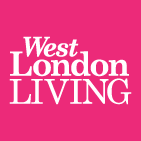Last year, the Mayor of London highlighted a growing issue in the city centred around internet access. The digital divide between London and the rural areas around it is well-known, concerning both availability and broadband speed. New data shows that inner-city areas have started to develop a similar internet disparity. Whether you’re a local or a visitor to the city, it helps to know which boroughs come out on top.
How London Uses the Internet
In urban centres across the world, the internet is a vital resource used to facilitate work, learning and entertainment. London is no different, filled with many public parks and areas where Wi-Fi is available for citizens and tourists alike. Besides workplace solutions, there are also several large industries in the UK that exist online and require net access to reach them. iGaming is one of those industries, where some of its largest websites are based in the UK and Ireland. For example, those with a connection can access slots at Paddy Power Bingo that feature hundreds of slot and bingo games. Access to online entertainment can be a contributing factor to the appeal of both urban and rural destinations.
Internet access is a big focus for the government of London and the country at large, as the UK continues its efforts to remain the #1 tech sector in Europe. It’s part of ongoing efforts to shape London into a smart city – an urban centre where ICT and digital support systems are built into the cityscape. Typically, these involve data-gathering for effective and sustainable governance, along with reducing traffic flows and automating some public services. For a lot of those, rigorous internet infrastructure is required.
Internet in London’s Boroughs
In 2022, Mayor Sadiq Khan launched the Digital Inclusion Service that aimed to bring 75,000 people online within a three-year period. This would be achieved by sourcing devices and mobile connectivity at low cost, along with educational resources to improve internet literacy, a skillset surveyed by Oxford Internet Surveys. The scheme wishes to lessen the approximately 270,000 Londoners who haven’t taken to the internet yet.
Before this renewed focus on internet quality, the government had declared the broadband Universal Service Obligation where premises have a legal right to request at least 10 Megabits per second. However, some parts of London fall short of that standard while others experience more than 100 Mbits/s.
Boroughs in the centre of London, surrounding the Thames, were showed to have the most inconsistent internet speeds. That would be boroughs like Tower Hamlets, Hackney and even operational centres like Westminster and the City of London. In West London, parts of Brent and Ealing (Wembley and Southall, respectively) had the most restricted internet access and slower speeds. Otherwise, the western fringes of London like Ealing and Hillingdon performed sufficiently.
Latest Ofcom data suggests that download speeds in places like Tower Hamlets has improved, possibly signalling an improvement in the past few years. As the central boroughs of London become more densely populated and reliant on the internet as a civic tool, continued efforts will be required to bring them to the same internet quality as Greater London areas.








